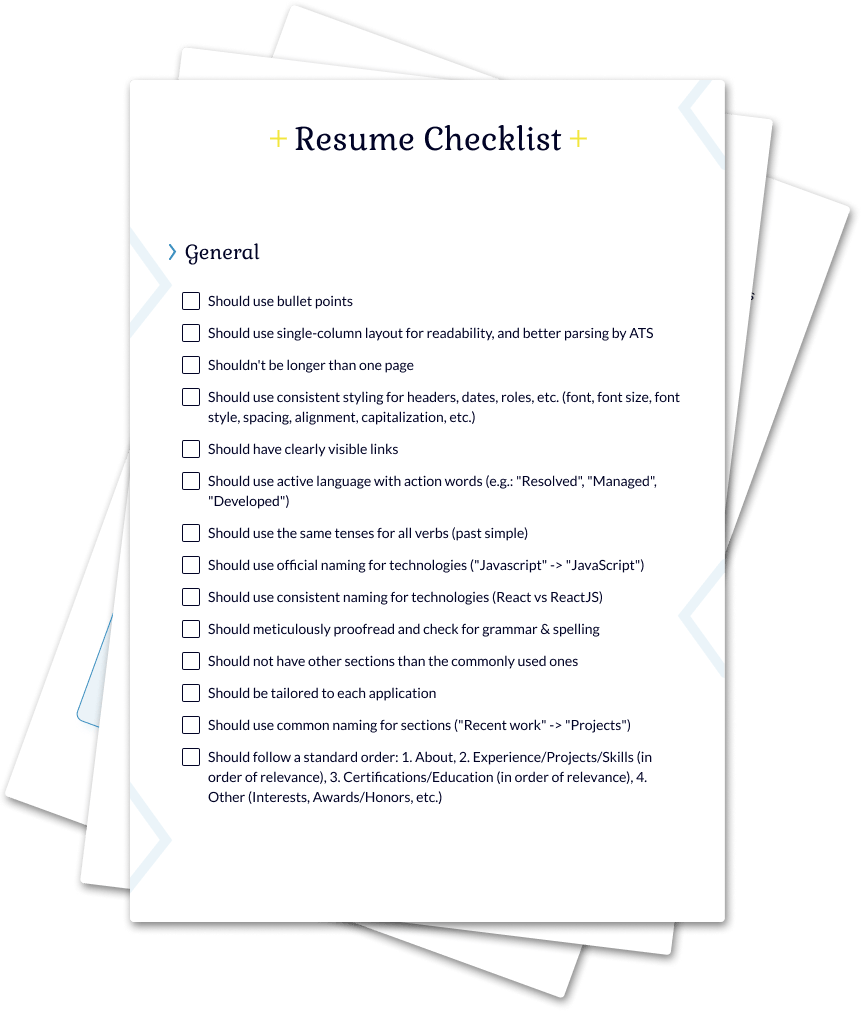One or Two-Column Resumes: Best Choice for Aspiring Web Developers
Kick back and listen to this article!
Press play below for an audio version, or keep scrolling to read at your own pace.
The design of your resume can make or break your job search.
A well-designed resume stays out of the way and effectively conveys your qualifications to the recruiter's scanning eye.
In contrast, a poorly designed resume is confusing, obscures important information, and fails to convince the recruiter to invite you for an interview.
With hundreds of applications per position, you want to do everything possible to pass the initial selection phase, where most applicants are eliminated.
Resume layouts typically come in two types: one-column and two-column. Which layout is more likely to increase your chances of securing an interview?
You might assume that a two-column layout is better, as it allows you to include more information and stand out. However, this is a misunderstanding.
These are the top three reasons why a two-column layout is likely hindering your job search.
Harder to read
Recruiters have to go through dozens or even hundreds of resumes for a single position. It's said that a recruiter spends at most 10 seconds reviewing a resume.
10 seconds! That's nothing.
In those 10 seconds, your resume must convince the recruiter to consider you for the position. That's not a small feat!
Your resume should be as easy to scan as possible, with minimal friction to the recruiter's eyes. A two-column layout complicates this by breaking up the visual field, requiring more focus and time to read — time you can't afford to lose.
Moreover, recruiters are more accustomed to scanning one-column layouts. This familiarity works in your favor, as the easier your resume is to scan, the more likely a recruiter will learn about your qualifications and consider you for the next round.
Formatting issues
Two-column layouts are challenging to format correctly. Managing whitespace and ensuring a cohesive flow is more complex than in a one-column layout.
Furthermore, a two-column layout is not update-friendly. Tailoring your resume for each job application (which you should!) can disrupt the balance between the columns. You're then left juggling the symmetry between the left and right column.
A two-column layout also is more prone to being distorted when saved in different file formats. The last thing you want is to send a jumbled mess to recruiters.
Formatting a one-column resume is already a challenge; going for a two-column layout adds unnecessary complexity.
Not ATS friendly
Many companies use Applicant Tracking Systems (ATS) to streamline their hiring process. An ATS parses resumes to simplify the recruiter's review. Some systems even score resumes on their match potential.
An ATS typically reads a resume from left to right, top to bottom. A two-column layout disrupts this logical flow, making correct parsing more challenging.
If the ATS can't fully interpret your resume, it may overlook key keywords, resulting in a lower score.
In a competitive job market, where hundreds of candidates apply for a single position, many applications are automatically rejected by these systems. You want to avoid automatic rejection and ensure your efforts are seen.
While ATS technology has improved and some have gotten better at parsing two-column layouts, you can't be certain which system will process your resume. Why take the risk?
Want to impress? Focus on content
Impress recruiters with your qualifications, not a fancy resume design.
Emphasize the impact of your work. Describe how your efforts benefited your team and led to measurable achievements. Use numbers to reinforce these points.
Highlight projects, even unfinished ones, that demonstrate your skills.
Ensure your resume clearly communicates why you are suited for the specific job you're applying for, including technologies and skills mentioned in the job description.
In conclusion, a one-column layout is the best choice for your resume. It's easier to read, update, and more likely to pass the ATS, giving you a real chance at the job.
